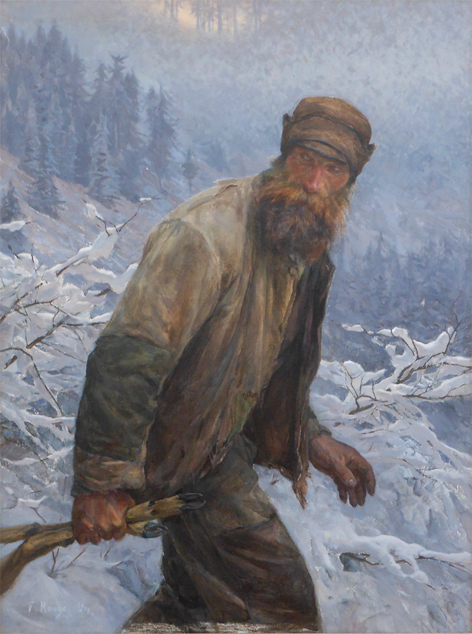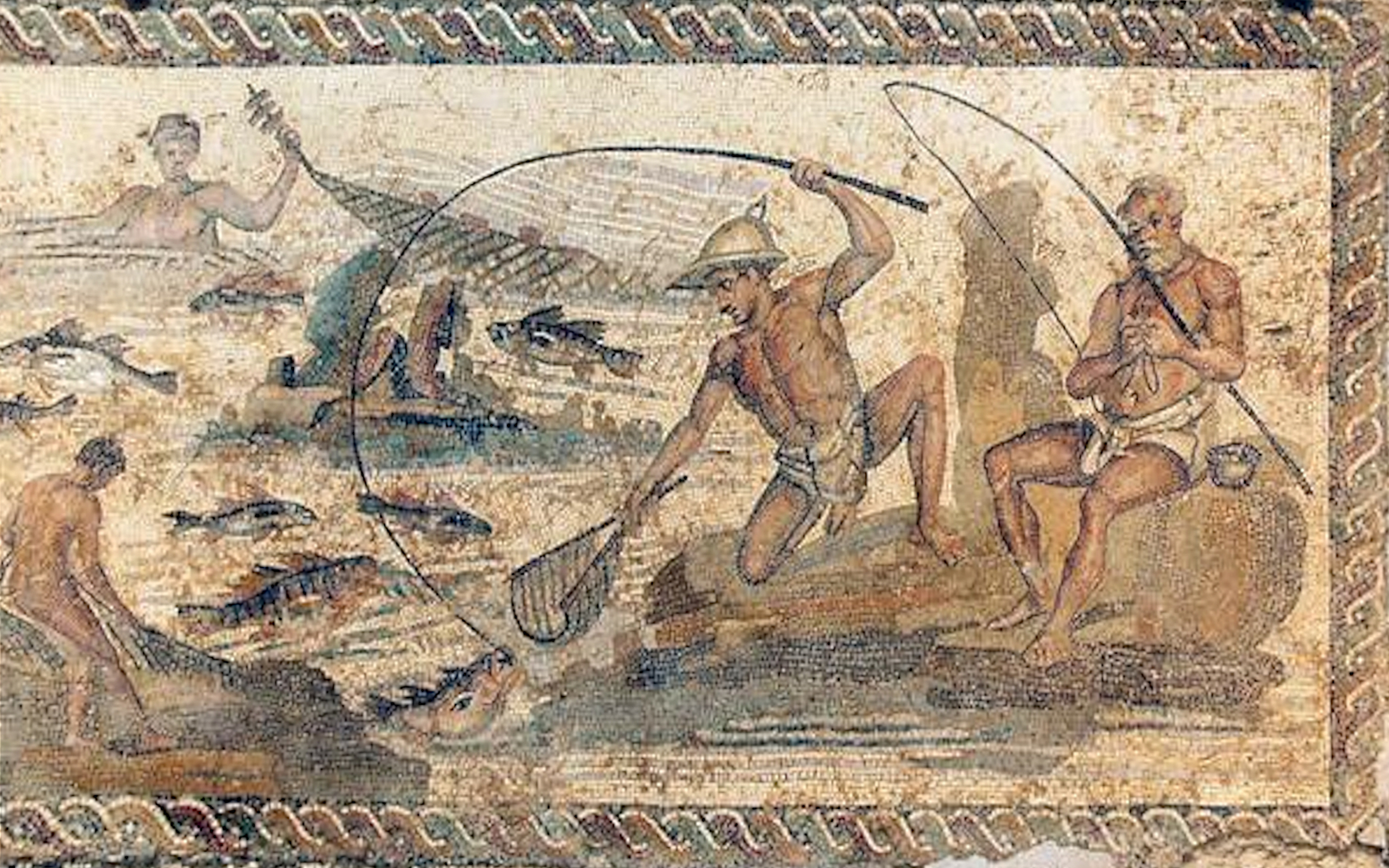|
Japanese Huchen
The Sakhalin taimen (''Parahucho perryi'', syn. ''Hucho perryi''), also known as the Japanese huchen or stringfish ( ja, 糸魚/イトヨ, itoyo), is a large species of salmonid freshwater fish in Northeast Asia, found in the lakes and large rivers of Primorsky, Khabarovsk, Sakhalin and Kuril Islands of Far Eastern Russia, as well as Hokkaido of Japan. Although often placed in the genus ''Hucho'', molecular phylogenetic and other evidence has shown that it belongs in its own monotypic genus ''Parahucho''. The population has been in general decline for a century at least, with contributory factors including degradation of the environment by logging, oil exploration and change of land use to agriculture. The fish is caught by commercial fishing as bycatch, by recreational anglers and illegally by poaching, and present populations are estimated to be less than 5% of their historic levels. The International Union for Conservation of Nature has rated the fish as being critica ... [...More Info...] [...Related Items...] OR: [Wikipedia] [Google] [Baidu] |
Animal
Animals are multicellular, eukaryotic organisms in the Kingdom (biology), biological kingdom Animalia. With few exceptions, animals Heterotroph, consume organic material, Cellular respiration#Aerobic respiration, breathe oxygen, are Motility, able to move, can Sexual reproduction, reproduce sexually, and go through an ontogenetic stage in which their body consists of a hollow sphere of Cell (biology), cells, the blastula, during Embryogenesis, embryonic development. Over 1.5 million Extant taxon, living animal species have been Species description, described—of which around 1 million are Insecta, insects—but it has been estimated there are over 7 million animal species in total. Animals range in length from to . They have Ecology, complex interactions with each other and their environments, forming intricate food webs. The scientific study of animals is known as zoology. Most living animal species are in Bilateria, a clade whose members have a Symmetry in biology#Bilate ... [...More Info...] [...Related Items...] OR: [Wikipedia] [Google] [Baidu] |
Molecular Phylogenetic
Molecular phylogenetics () is the branch of phylogeny that analyzes genetic, hereditary molecular differences, predominantly in DNA sequences, to gain information on an organism's evolutionary relationships. From these analyses, it is possible to determine the processes by which diversity among species has been achieved. The result of a molecular phylogenetic analysis is expressed in a phylogenetic tree. Molecular phylogenetics is one aspect of molecular systematics, a broader term that also includes the use of molecular data in taxonomy and biogeography. Molecular phylogenetics and molecular evolution correlate. Molecular evolution is the process of selective changes (mutations) at a molecular level (genes, proteins, etc.) throughout various branches in the tree of life (evolution). Molecular phylogenetics makes inferences of the evolutionary relationships that arise due to molecular evolution and results in the construction of a phylogenetic tree. History The theoretical framew ... [...More Info...] [...Related Items...] OR: [Wikipedia] [Google] [Baidu] |
Anadromous
Fish migration is mass relocation by fish from one area or body of water to another. Many types of fish migrate on a regular basis, on time scales ranging from daily to annually or longer, and over distances ranging from a few metres to thousands of kilometres. Such migrations are usually done for better feeding or to reproduce, but in other cases the reasons are unclear. Fish migrations involve movements of schools of fish on a scale and duration larger than those arising during normal daily activities. Some particular types of migration are ''anadromous'', in which adult fish live in the sea and migrate into fresh water to spawn; and ''catadromous'', in which adult fish live in fresh water and migrate into salt water to spawn. Marine forage fish often make large migrations between their spawning, feeding and nursery grounds. Movements are associated with ocean currents and with the availability of food in different areas at different times of year. The migratory movements ... [...More Info...] [...Related Items...] OR: [Wikipedia] [Google] [Baidu] |
Hokkaidō
is Japan, Japan's Japanese archipelago, second largest island and comprises the largest and northernmost Prefectures of Japan, prefecture, making up its own List of regions of Japan, region. The Tsugaru Strait separates Hokkaidō from Honshu; the two islands are connected by the undersea railway Seikan Tunnel. The largest city on Hokkaidō is its capital, Sapporo, which is also its only Cities designated by government ordinance of Japan, ordinance-designated city. Sakhalin lies about 43 kilometers (26 mi) to the north of Hokkaidō, and to the east and northeast are the Kuril Islands, which are administered by Russia, though the four most southerly are Kuril Islands dispute, claimed by Japan. Hokkaidō was formerly known as ''Ezo'', ''Yezo'', ''Yeso'', or ''Yesso''.Louis Frédéric, Nussbaum, Louis-Frédéric. (2005). "Hokkaidō" in Although there were Japanese settlers who ruled the southern tip of the island since the 16th century, Hokkaido was considered foreign territo ... [...More Info...] [...Related Items...] OR: [Wikipedia] [Google] [Baidu] |
Tokachi River
is a river in Hokkaidō, Japan. Etymology In 1820, the explorer Takeshiro Matsuura (松浦 武四郎) proposed "Tokachi" as the name of the surrounding Tokachi Province, with each character corresponding to a Japanese homophone. The province was named after this river, which in turn was derived from the Ainu language Ainu (, ), or more precisely Hokkaido Ainu, is a language spoken by a few elderly members of the Ainu people on the northern Japanese island of Hokkaido. It is a member of the Ainu language family, itself considered a language family isolate ... word "tokapci". Although the exact origins of "tokapci" were unknown, Hidezo Yamada, an Ainu language researcher, proposed these origins: * tokap-usi ("breast, somewhere") * toka-o-pci ("swamp, around a place, either") Rivers of Hokkaido Rivers of Japan {{Japan-river-stub ... [...More Info...] [...Related Items...] OR: [Wikipedia] [Google] [Baidu] |
IGFA
The International Game Fish Association (''IGFA'') is the leading authority on angling pursuits and the keeper of the most current World Record fishing catches by fish categories. Fishermen who are sport fishers are careful to follow their stringent rules for fair play and line requirements in order to receive the honor of being listed in their annual "World Record Game Fishes" publication. The publication also gives fishing tips, and has an extensive fish identification guide. The IGFA is also an ardent proponent of aquatic habitat conservation, and cooperates with biologists all over the world. It is considered the world’s governing body for sport fishing. IGFA is headquartered in Dania Beach, Florida. Philosophy IGFA's objectives are founded on the beliefs that game fish species, related food fish, and their habitats are economic, social, recreational, and aesthetic assets which must be maintained, wisely used and perpetuated; and that the sport of angling is an importa ... [...More Info...] [...Related Items...] OR: [Wikipedia] [Google] [Baidu] |
Piscivore
A piscivore () is a carnivorous animal that eats primarily fish. The name ''piscivore'' is derived . Piscivore is equivalent to the Greek-derived word ichthyophage, both of which mean "fish eater". Fish were the diet of early tetrapod evolution (via water-bound amphibians during the Devonian period); insectivory came next; then in time, the more terrestrially adapted reptiles and synapsids evolved herbivory. Almost all predatory fishes (most sharks, tuna, billfishes, pikes etc.) are obligated piscivores. Some non-piscine aquatic animals, such as whales, sea lion and crocodilians, are not completely piscivorous, often also preying on invertebrates, marine mammals, waterbirds and even wading land animals in addition to fish; while others, such as the bulldog bat and gharial, are strictly dependent on fish for food. Some creatures, including cnidarians, octopuses, squid, spiders, cetaceans, grizzly bears, jaguars, wolves, snakes, turtles and sea gulls, may have fish as significa ... [...More Info...] [...Related Items...] OR: [Wikipedia] [Google] [Baidu] |
International Union For Conservation Of Nature
The International Union for Conservation of Nature (IUCN; officially International Union for Conservation of Nature and Natural Resources) is an international organization working in the field of nature conservation and sustainable use of natural resources. It is involved in data gathering and analysis, research, field projects, advocacy, and education. IUCN's mission is to "influence, encourage and assist societies throughout the world to conserve nature and to ensure that any use of natural resources is equitable and ecologically sustainable". Over the past decades, IUCN has widened its focus beyond conservation ecology and now incorporates issues related to sustainable development in its projects. IUCN does not itself aim to mobilize the public in support of nature conservation. It tries to influence the actions of governments, business and other stakeholders by providing information and advice and through building partnerships. The organization is best known to the wide ... [...More Info...] [...Related Items...] OR: [Wikipedia] [Google] [Baidu] |
Poaching
Poaching has been defined as the illegal hunting or capturing of wild animals, usually associated with land use rights. Poaching was once performed by impoverished peasants for subsistence purposes and to supplement meager diets. It was set against the hunting privileges of nobility and territorial rulers. Since the 1980s, the term "poaching" has also been used to refer to the illegal harvesting of wild plant species. In agricultural terms, the term 'poaching' is also applied to the loss of soils or grass by the damaging action of feet of livestock, which can affect availability of productive land, water pollution through increased runoff and welfare issues for cattle. Stealing livestock as in cattle raiding classifies as theft, not as poaching. The United Nations' Sustainable Development Goal 15 enshrines the sustainable use of all wildlife. It targets the taking of action on dealing with poaching and trafficking of protected species of flora and fauna to ensure their avail ... [...More Info...] [...Related Items...] OR: [Wikipedia] [Google] [Baidu] |
Angling
Angling is a fishing technique that uses a fish hook or "angle" (from Old English ''angol'') attached to a fishing line to tether individual fish in the mouth. The fishing line is usually manipulated via a fishing rod, although rodless techniques such as handlining and longlining also exist. Modern angling rods are usually fitted with a reel that functions as a cranking device for storing, retrieving and releasing out the line, although Tenkara fishing and cane pole fishing are two rod-angling methods that do not use any reel. The hook itself can be additionally weighted with a dense tackle called a sinker, and is typically dressed with an appetizing bait to attract the fish and enticing it into swallowing the hook, but sometimes an inedible fake bait with multiple attached hooks (known as a lure) is used instead of a single hook with edible bait. A bite indicator, such as a float or a quiver tip, is often used to relay underwater status of the hook to the surface. W ... [...More Info...] [...Related Items...] OR: [Wikipedia] [Google] [Baidu] |
Recreational Fishing
Recreational fishing, also called sport fishing or game fishing, is fishing for leisure, exercise or competition. It can be contrasted with commercial fishing, which is professional fishing for profit; or subsistence fishing, which is fishing for survival and livelihood. The most common form of recreational fishing is angling, which is done with a rig of rod, reel, line, hooks and any one of a wide range of baits, as well as other complementary devices such as weights, floats, swivels and method feeders, collectively referred to as ''terminal tackles''. Lures are frequently used in place of fresh bait when fishing for predatory fishes. Some hobbyists hand-make custom tackles themselves, including plastic lures and artificial flies. Other forms of recreational fishing include spearfishing, which is done with a speargun or harpoon usually while diving; and bowfishing, with is done from above the water with archery equipments such as a compound bow or crossbow. ... [...More Info...] [...Related Items...] OR: [Wikipedia] [Google] [Baidu] |







_-_Ystad-2018.jpg)